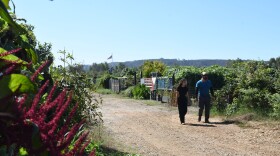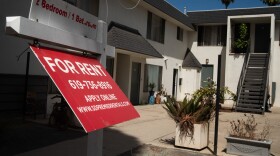The U.S. Education Department has released the first in a series of school surveys intended to provide a national view of learning during the pandemic. It reveals that the percentage of students who are still attending school virtually may be higher than previously understood.
As of January and early February of this year, 44% of elementary students and 48% of middle school students in the survey remained fully remote. And the survey found large differences by race: 69% of Asian, 58% of Black and 57% of Hispanic fourth graders were learning entirely remotely, while just 27% of White students were.
Conversely, nearly half of white fourth-graders were learning full-time in person, compared with just 15% of Asian, 28% of Black and 33% of Hispanic fourth-graders. The remainder had hybrid schedules.
This disparity may be partly driven by where students live. City schools, the survey found, are less likely than rural schools to offer full-time, in-person classes. Full-time, in-person schooling dominated in the South and the Midwest, and was much less common in the West and Northeast.
The racial and ethnic gaps may also be driven in part by which families are choosing to stay remote, even where some in-person learning is offered. Three out of 4 districts around the country were offering some in-person learning as of January, the report says, with full-time, in person learning more common than hybrid schedules.
The Education Department created the survey in response to an executive action signed by President Biden on his first full day in office. To obtain results quickly, researchers used the existing infrastructure of the National Assessment of Educational Progress, the testing program also known as "The Nation's Report Card."
More than a year after schools around the country first switched to virtual learning, this is the first attempt at federal data collection on the progress of school reopening. Although the Trump administration pushed for school reopening, it made no such efforts. "I'm not sure there's a role at the department to collect and compile that research," former Education Secretary Betsy DeVos said last October.
This survey covers a nationally representative sample of around 7,000 schools, half of which were educating fourth-graders and the other half educating eighth-graders (those being grades included in The Nation's Report Card testing).
New results will be reported monthly through at least July. The results are intended to provide context for The Nation's Report Card in 2022, and state tests, which the Biden administration is requiring this year.
The survey is also intended to pinpoint inequities. For example, among the other key findings: More than 4 in 10 districts said they were giving priority to students with disabilities for in-person instruction. Yet in practice, 39% of elementary students with disabilities remained remote, compared with 44% overall. Many families of students with disabilities have said that their children receive limited benefit from virtual learning.
Finally, this pilot survey asked how many hours of live video instruction students were receiving when learning remotely. The majority of schools said they are offering more than three hours per day. But 10% of eighth-graders, and 5% of fourth-graders, are getting no live instruction at all when learning remotely. They may be working on other activities such as homework packets, or software, or watching pre-recorded lessons.
The response rate to this nationally representative survey varied around the country and was lowest in the Northeast. Notably, out of 27 large urban districts targeted in the survey, 16 declined to participate.
Previously, NPR has been citing school reopening data provided by an organization called Burbio. Burbio scrapes school district websites to find out whether school is being offered hybrid, full-time or all-virtual. Their data set — 1,200 school districts representing 35,000 schools and nearly half of the U.S. school population, is larger than that covered in this federal survey.
Copyright 2021 NPR. To see more, visit https://www.npr.org.






